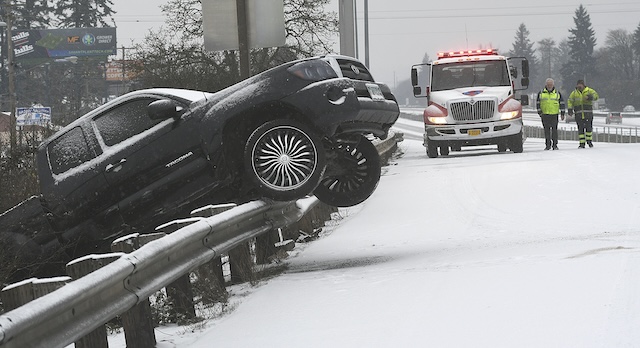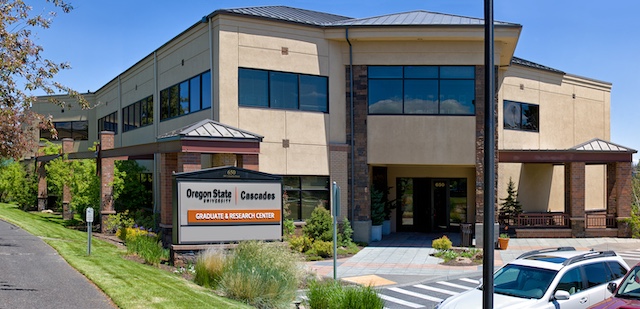Where forest fires have caused an alarming increase in carbon emissions
Published 11:44 am Thursday, October 17, 2024
When a tree burns, it releases carbon dioxide that can further trap heat on Earth. A new study is showing an exceptionally large increase in these emissions from a steadily warming corner of our forested planet.
Carbon dioxide emissions from forest fires have increased by 60% globally in the past two decades, according to a study published in the journal Science on Thursday. Northernmost boreal forests, such as in North America and Eurasia, are among the largest emitters, where emissions nearly tripled from 2001 to 2023.
“What we’re documenting is essentially a rise in the frequency of fires in these forests and also hotter and drier conditions than they’ve ever really evolved to deal with,” said Matthew Jones, lead author of the study. “When fires arrive, they’re worse than they were before.”
The findings highlight an important shift in how the planet is operating. The study’s authors found that tropical forests, such as in Southeast Asia or Indonesia, were the biggest contributor to wildfire-related carbon dioxide emissions in the early 2000s, often because of human-caused deforestation. But as warming accelerates faster in the northern parts of the world, northern forests are feeling the burn more.
Although it’s a stark increase, the study is “not surprising,” said James MacCarthy, a researcher at Global Forest Watch who was not involved in the research. “With each degree of warming, the risk of wildfires increases exponentially.”
Fires outside of the tropics have steadily emitted more and more carbon annually since 2001, releasing an additional half a billion tons of carbon dioxide each year, the study showed. Part of the increase is due to more area being burned, but also to more severe wildfires.
Jones and his colleagues found that the amount of carbon emitted in a burned area, or the carbon combustion rate, increased by almost 50 percent globally from 2001 to 2023.
Much of that intense carbon burning was concentrated in boreal forests, which often store large amounts of carbon in peatlands and deep in the soil. Jones said many of these boreal forests are evergreen forests, shedding lots of needles on the ground that can pick up sparks, and with trees that grow low branches that can shuttle the fire higher into the tree. Many of these boreal forest fires, Jones found in his own previous research, are ignited by lightning – a growing risk in a warming world.
“When fires are affecting forests, they’re burning through more material,” said Jones, a climate scientist at the University of East Anglia. “They’re killing more trees. They’re burning off more soil.”
Many of the biggest forest fire events are fresh in our memories, and so is the weather driving the blazes.
California recorded its deadliest and most destructive wildfire season in 2018, with one blaze wiping out an entire town. Two years later, the state recorded its largest wildfire season by acre. Both seasons saw extremely warm to record temperatures, low snowpack and drought.
In 2021, fires in Siberia burned millions of acres and emitted a record amount of carbon dioxide into the atmosphere. The region experienced high heat, low soil moisture and drought as well.
In summer 2023 alone, wildfires in Canada burned about six times more area than on average over the past two decades – painting skies orange with harmful pollutants hundreds of miles away. The forest loss accounted for more than a quarter of all trees lost that year. The season was largely driven by abnormally hot temperatures but also low precipitation – conditions that were more than twice as likely to happen because of climate change, analysis showed.
The study shows that “2023’s extreme fire activity is part of a growing trend, not an isolated event,” said MacCarthy, who published research on the Canadian fires.
Previous studies have shown record carbon dioxide emissions from boreal forests during certain years, but John Abatzoglou, a co-author and climate scientist at University of California at Merced, said the Science study is novel because it shows the extent across global forests and a longer time. By analyzing all forest types, researchers were able to highlight the outsize contribution from boreal forests since about 2011. A machine learning model parsed out the effects of climate change from other factors, such as human activities.
“Warmer and drier fire seasons tend to be an ingredient behind more fire activity in forests,” Abatzoglou said.
As we burn off critical forests, Earth also loses an important way to capture carbon from the atmosphere. Some climate plans include investing in more trees, but Jones said that won’t be helpful if they keep burning.
Some forests are probably already lost, never to return in our lifetimes, Jones said. Some of the most severe fires have burned through carbon-rich peatlands, which took thousands of years to build up.
“Any burning of those fuels is kind of irreversible because we won’t expect to see them forming until thousands of years from now,” Jones said. “Something fundamentally is changing in the Earth’s system as a result of climate change.”
In some cases, though, forest loss can prevent similar future events by reducing fuel for an ignition source, Abatzoglou said.
In the western United States, for example, he said wildfires can provide some benefits by getting rid of excess vegetation that can act as a fuel source. But areas still have to live through the destruction to get to that point.
While people can practice better fire management techniques to adapt to the hotter conditions, Jones said the goal would be to tackle the underlying problem of rising temperatures.
“It’s ultimately a climate change problem that we’re seeing here,” Jones said. “Tackling those fossil fuel emissions, bringing them down and so on, is going to be absolutely critical.”








